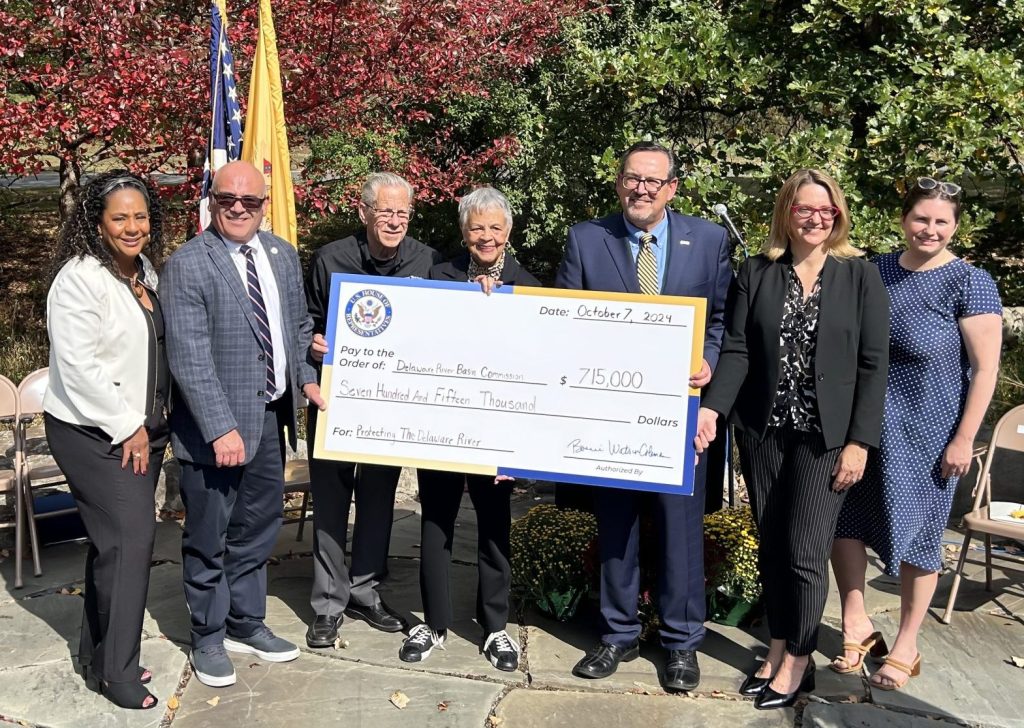
DRBC gets $715,000 in federal money through U.S. Rep. Bonnie Watson Coleman
| October 11, 2024
U.S. Representative Bonnie Watson Coleman (NJ-12) once again used her muscle to bring home $715,000 to the Delaware River Basin Commission as the DRBC held a gathering on its front lawn to celebrate both the money and Watson Coleman under blue skies and a warm autumn sun on Monday.
The speeches began with the DRBC’s executive director, Steve Tambini, calling for a moment of silence for all the victims of the brutal Hamas raid on Israel just a year ago, as well as the ongoing tragedy in Gaza.
Many speakers noted that climate change is making us all aware of the state of the planet, as evidenced here at home by the terrible toll of Hurricane Helene and the threat of Hurricane Milton.
And many congratulated the DRBC for its leadership in helping our watershed understand what climate change could do in our region.
In 2019, the Advisory Committee on Climate Change was established and in June the commissioners directed the staff to develop a Climate Resilience Plan.
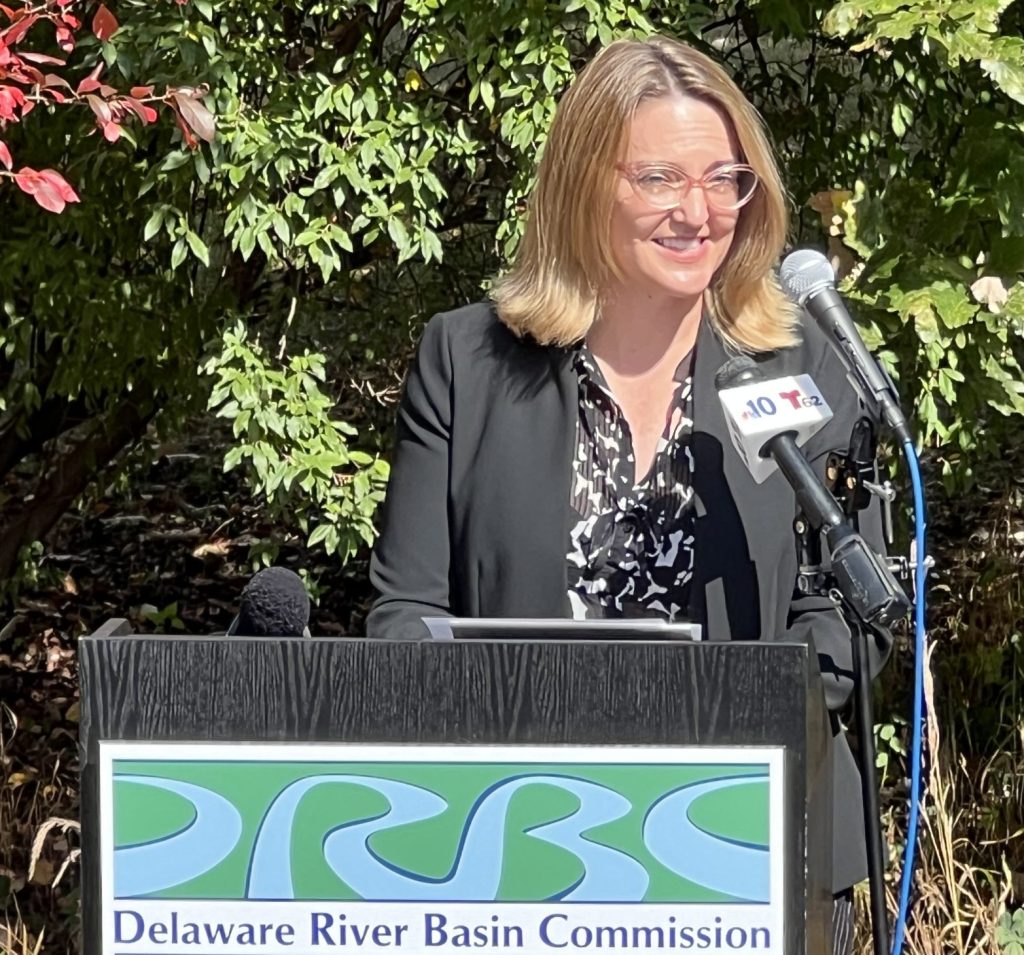
It was also announced by the DRBC’s deputy director, Kristen Bowman Kavanagh, that the DRBC will be devoting $1 million — almost 70 percent of recent federal funding — to advance climate resilience in the basin.
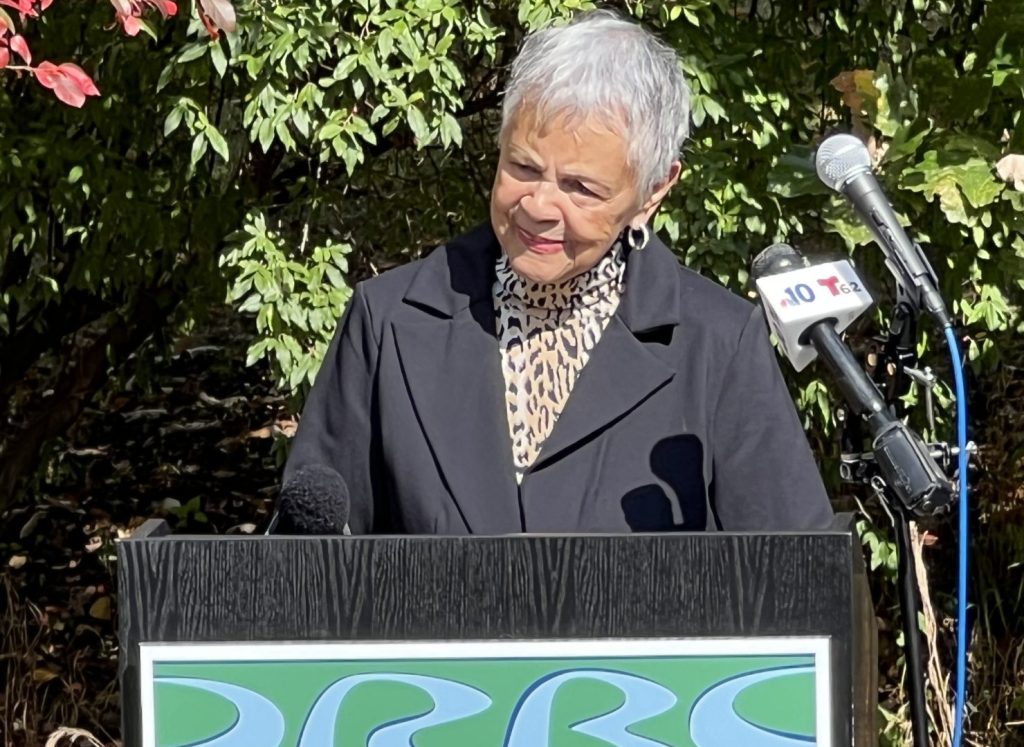
Watson Coleman secured this $715,000 for the second year in a row to support DRBC’s water resources work in the region. The funding came as a part of the omnibus government funding legislation that Congress passed in March.
“Clean water is not a luxury. It’s a basic human right,” she said, adding: “This $715,000 federal investment will help ensure the over 14 million Americans who rely on the Delaware River Basin for drinking, agriculture and industrial usage continue to have access to a clean source of water. It will support the 600,000 jobs and $20 billion in industrial activity that the river facilitates. And it will make our communities more resilient to the growing impacts of climate change.”
There was the expected big beautiful check that the speakers gathered around and for the sake of the day’s proceedings, the check was “drawn” on the fictitious account of Watson Coleman.
The actual check will come from the United States Army Corps of Engineers.
That’s ironic since it’s the USACE that has been the most delinquent in paying federal dollars promised to the DRBC as far back as 1988.
Funding shortfalls
That’s the year when all signatories of the Delaware River Compact agreed to what was called full signatory contribution funding of the commission, amounting to an annual total of $3,574,000 due to the DRBC.
Those signatories are the four watershed states — New York, New Jersey, Pennsylvania and Delaware — and the representative of the federal government, the USACE.
The DRBC has never received that amount in any year. Here’s the funding history in one telling graphic.
Here’s the state of play at the moment:
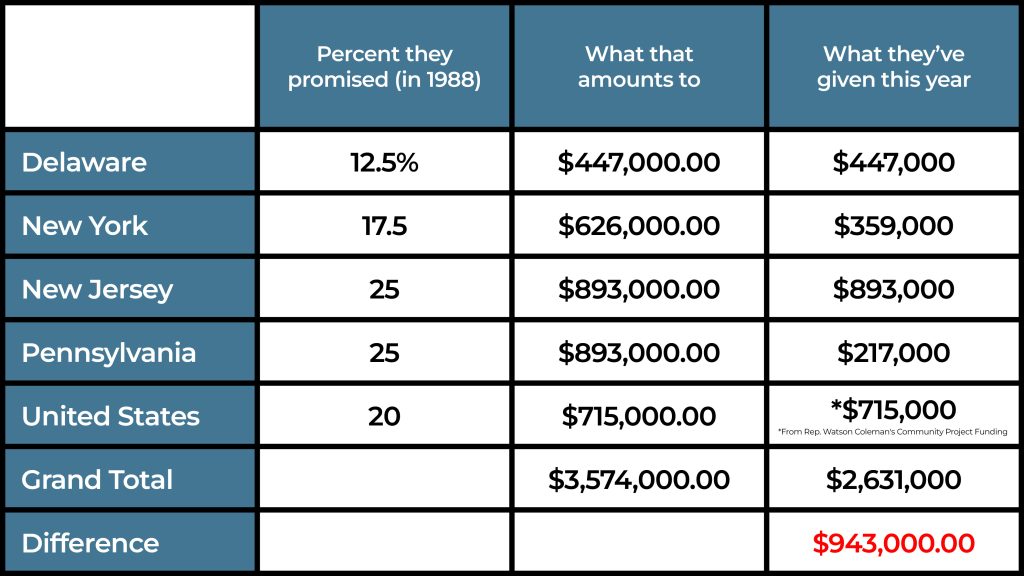
The DRBC is now closer to the funding it was supposed to get and there are only two delinquents now. One is New York, which has been stuck at the same number since 2015, giving $359,500 instead of the promised $626,000.
The other delinquent is Pennsylvania. In Gov. Josh Shapiro’s budget, he routinely funds DRBC at Pennsylvania’s full signatory contribution funding: $893,000. That’s comparable to New Jersey’s share, since both of those states have the longest Delaware River shoreline.
The Pennsylvania Legislature routinely gouges that down to $217,000. Many legislators are still angry over DRBC’s decision to ban fracking in the watershed in 2021, though the paring of the governor’s request goes back to 2018.
Even with the full signatory contribution funding, the money is, according to Elba Deck, DRBC’s director of finance and administration, “a tear drop in the ocean” of the various states’ budgets.
And though Deck expressed gratitude to Watson Coleman and the other legislators who voted to fund the DRBC, there’s a problem with Community Project Funding.
“The biggest problem is that we can’t count on that,” she said. “Looking at projections for projects and staffing and looking at what we need to get done. We can’t increase staff since this is not a funding source we can rely on.”
“I have to pat us on the back,” she added. “I am always amazed at the quality and quantity of work that gets done by our scientists and engineers.”
Demonstration of technology
Before the celebrations at DRBC headquarters in Ewing, N.J., a smaller group gathered on the shore of the Delaware River in Trenton so that Watson Coleman would have an opportunity to chat with some of those scientists and engineers about the work they’re doing.
First John Yagecic, DRBC’s manager of water quality assessment, showed the congresswoman one of the drones that the DRBC can use to understand what’s going on in and near the river. For instance, when flooding is severe and doesn’t allow people to get to where it’s happening, a drone flyover can provide useful, timely information.
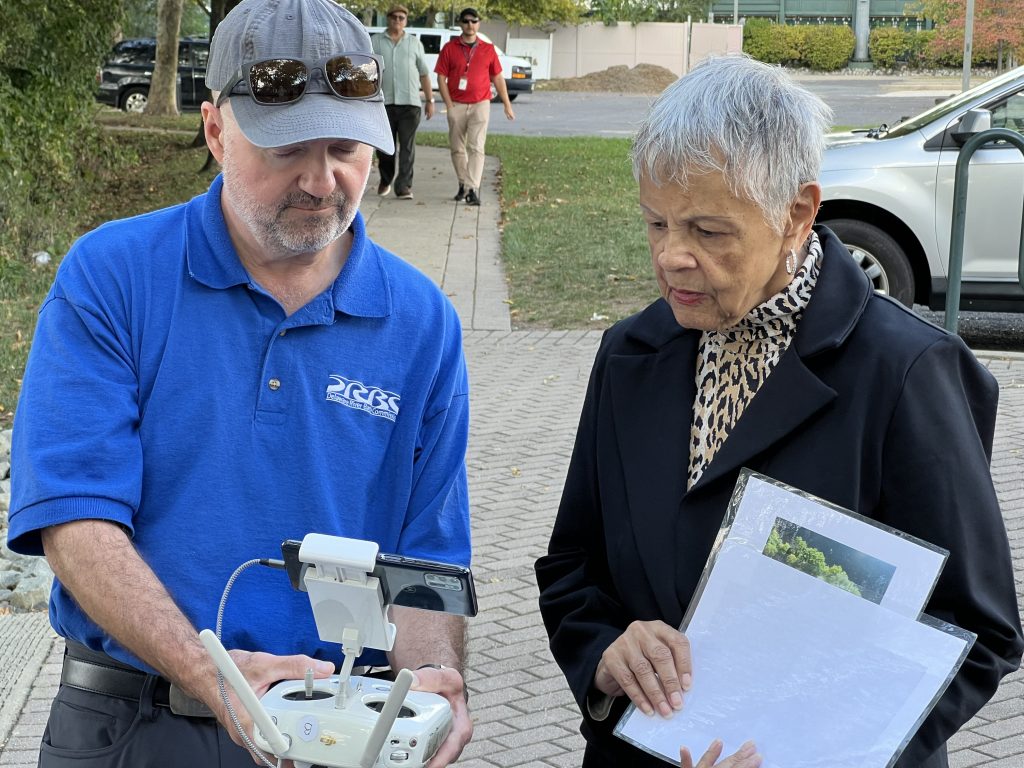
Also, using heat-sensitive equipment on the drone, it will show heat plumes from discharges, which is one of the measurements that the DRBC takes into account when granting permits.
Then Elaine Panuccio, a water resource scientist, demonstrated how DRBC scientists take water samples to see how healthy the river is.
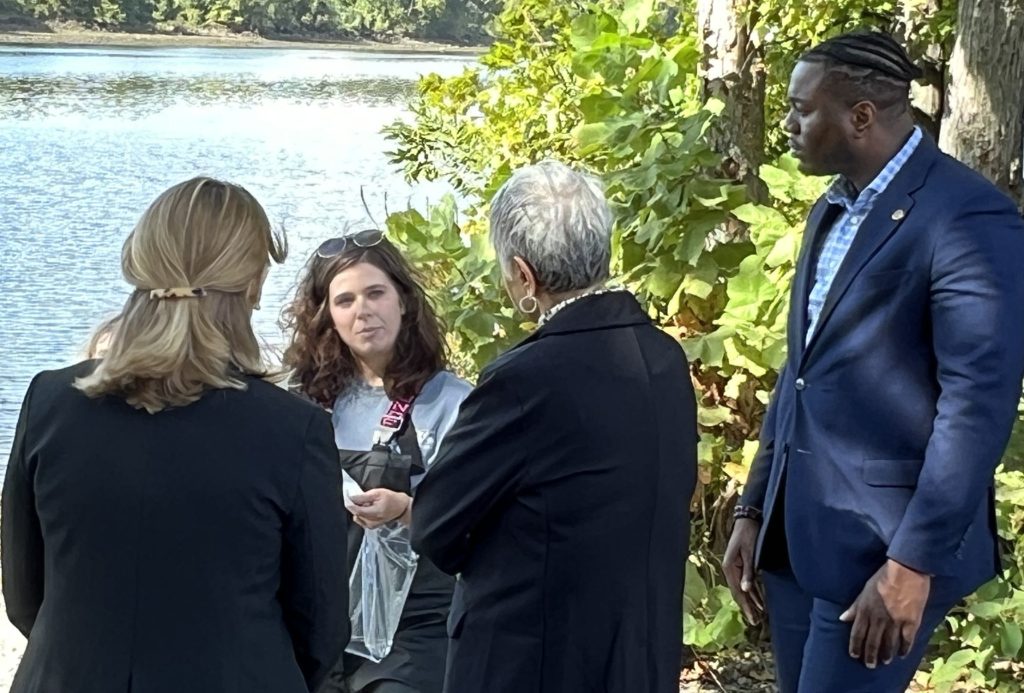
One other unexpected proof of how healthy the river is: Anglers were fishing on the same boat ramp as the gathering and one, Rodney Lloyd, had caught two catfish — one of which was still flopping on the ground.
Lloyd said they make good eating and that he wasn’t nervous about possible contaminants. “The river is really healthy here and farther north,” he said, noting that he was having catfish for dinner.







